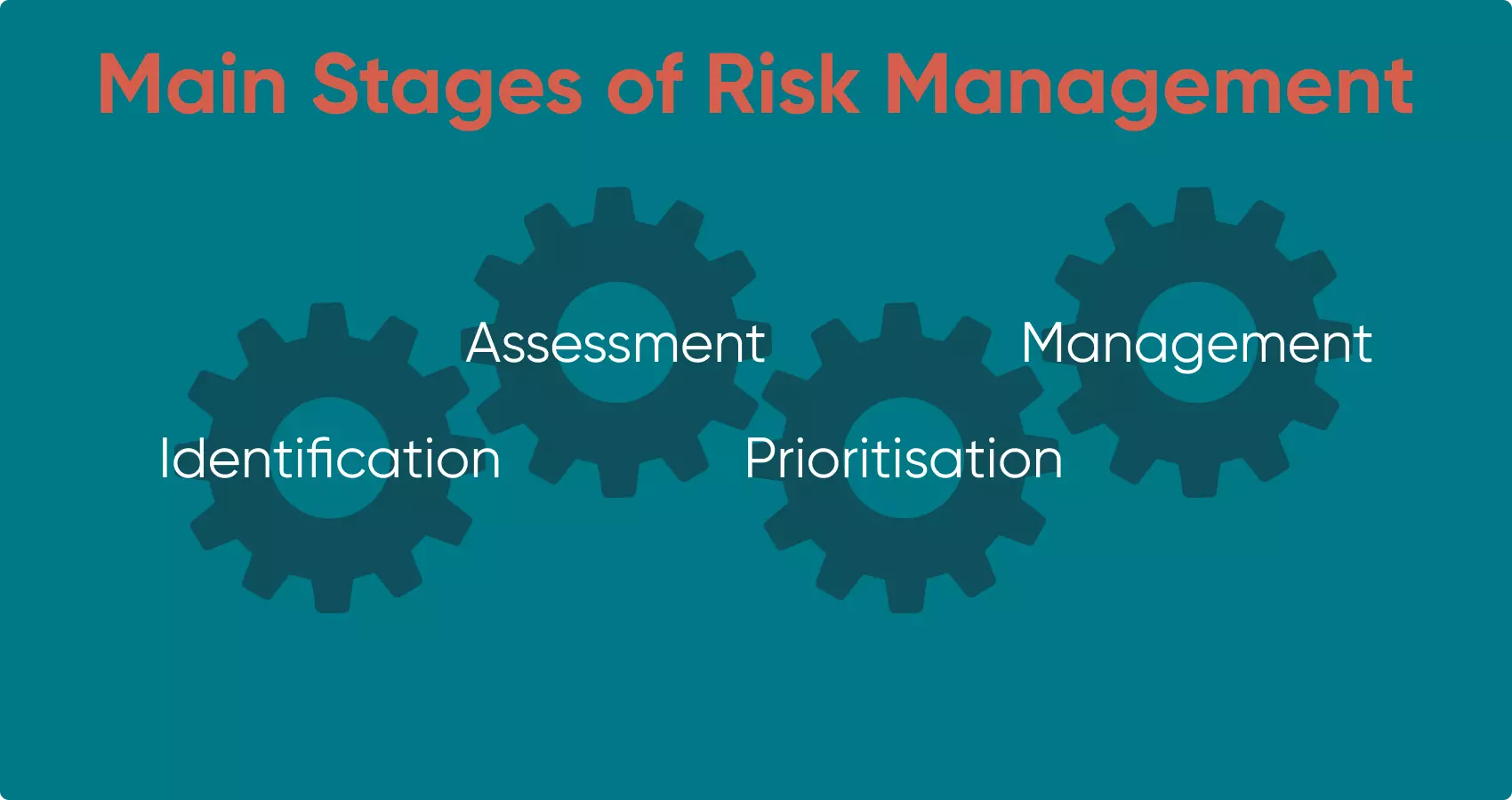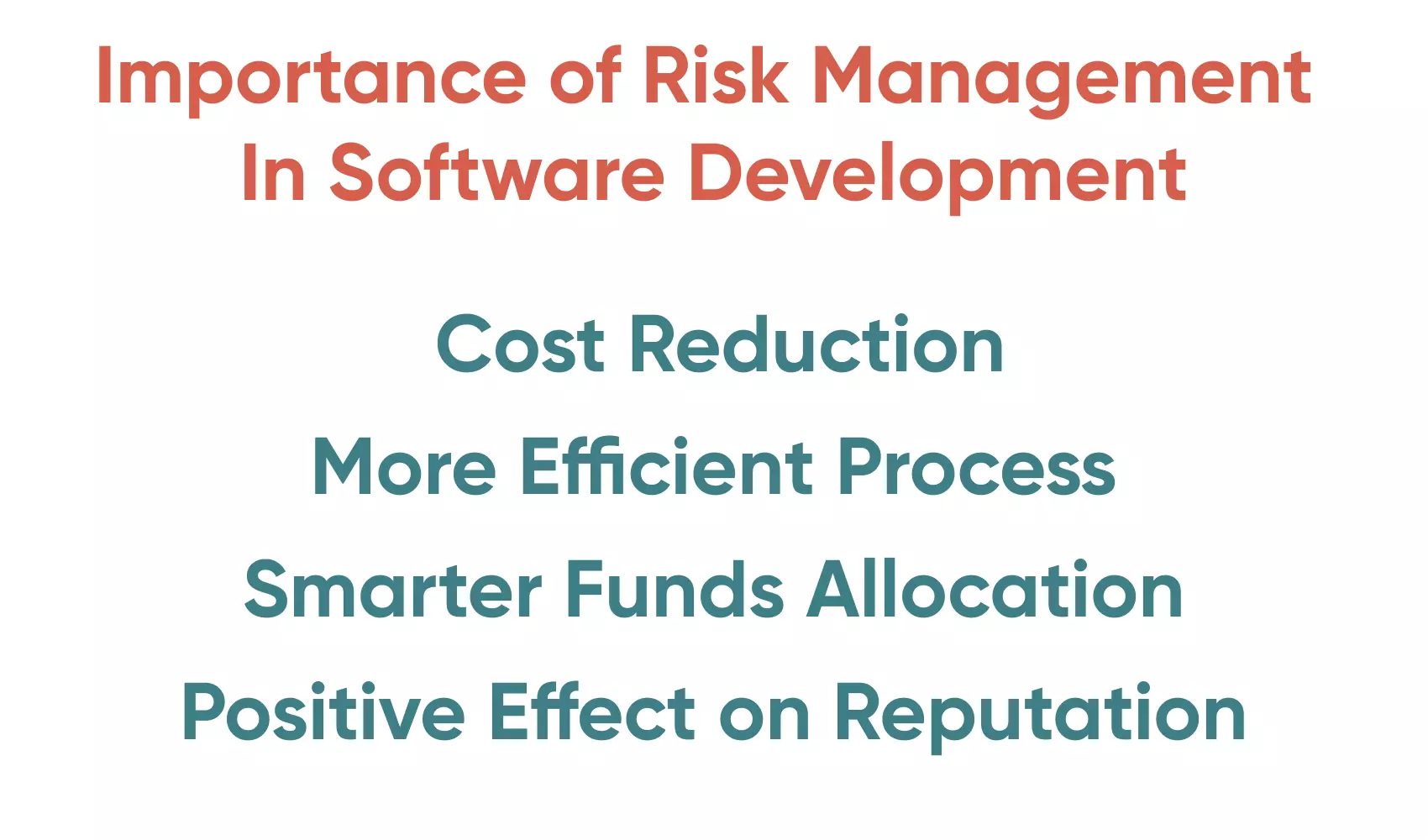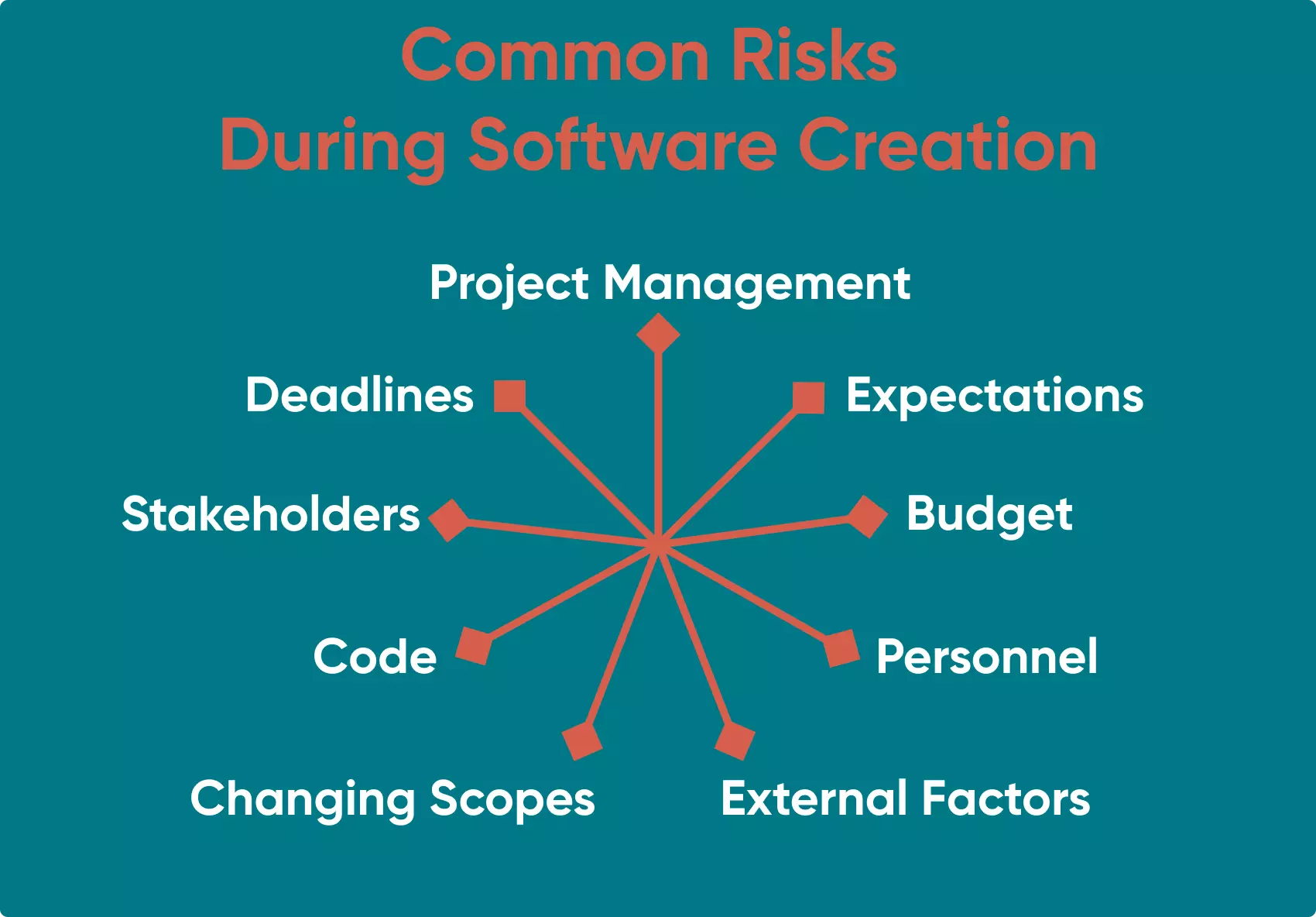Risk Management in Software Development


There are always certain risks involved when you invest your money in any business. Many factors and pitfalls may lead to failures and financial losses, yet through correct project risk management, it is possible to ensure risk avoidance. We can consider any business investment a business risk, and that is why it is necessary to predict as many risks as possible and manage them to avoid unexpected losses regardless of what you are going to do. Whether you are building a supermarket or creating software solutions, any good CEO of a business requires a detailed risk analysis coupled with a broad view of managing risk.
At Go Wombat, we understand the common risks you may face when you plan to create web or mobile applications and hire a software development company. It is crucial to be prepared for them and manage them efficiently to ensure project success. Within this article, we will explore some of the risk management strategies possible and how we deal with this issue. Also, we will share some of our mitigation strategies, along with our industry expertise gained in our role as a software development service provider.
What Is Risk Management In Software Development?
First, let’s define what risk means. Risk is a potential problem. This is an action that may jeopardise a project's success. Risk means losses in one way or another, be it business risk, or technical risk, besides the more common financial one.
Anti-crisis activities are not always practical. So the aggregation and identification of risks during the planning stage are the primary methods of predicting unplanned and unacceptable circumstances.
Software development is an activity where technological achievements and high skills are required. The application’s success depends mainly on the elaboration of all risks. It is not enough to realise such a particular risk is possible. You need to identify risks, assess them, and prioritise and manage them.
Most software projects aim to provide users with value, and the software should have some innovative features and increased efficiency. You should consider that all software engineering projects have some potential risks, so it is necessary to work hard to identify, understand and mitigate any possible risk that may jeopardise the successful result.
Main Aspects Of Risk Management in software development

As defined, the risk management process helps deal with all software project risks that may arise during a software development project.
Risk identification
The first stage includes identifying and understanding the risks connected with your software development project. The earlier it is possible to recognise them, the fewer issues you will face during the software development. Part of this process is understanding your software development goals.
Risk assessment
Then, it is critical to assess the severity of risks. Are these risks too dangerous for your project from the very beginning, or they may threaten it later? Specialists should find it out to prioritise risks, which is the next phase.
Risk Prioritisation
If there are multiple risks during the project development, we need to prioritise them in order of importance and deal with them one by one to ensure successful completion.
Risk Management
This is the last and the primary aspect when you can successfully mitigate all arising risks. Still, you need to use all resources wisely to prevent any adverse effects of threats on your software development. The risk management process helps you and the development team build the software development process in a more reliable way.
Let a trustworthy software development project company make your software with risk mitigation! Contact Go Wombat.
Why Risk Management Is Critical In Software Development

It is worth mentioning that the development of technologies and advanced go-to-market methods allows every business to create a product with unique features. However, a great variety of products with differing features, makes it challenging to identify all related risks. With this in mind, we should also remember that it is never possible to remove every risk completely.
The main goal of risk management in software development is to know what can possibly go wrong, the reason for this risk, its potential impact, and how to solve it. Then, if you manage to deal with troubles in software development properly, your business will be prepared for all threats and may survive them.
Cost Reduction
Project expenses are without doubt the biggest consideration. You can save a lot of time, effort, and money since you can prevent possible risks and consequences. This process aims to identify not just the more significant risks, but the less obvious ones throughout the entire project.
More Productive Process
The software development process becomes much faster since the development team can build your software considering all potential risks without wasting time on fixing unforeseen problems.
Smarter Funds Allocation
You can avoid unexpected spending and invest money in the required stages of development only. You can allocate correct funds to each development stage and account for each team member.
Positive Effect on the Reputation
It will positively affect reputations both inside and out with a smooth running successful project. Your team will know that you try to keep everything under control.
Common Risks Any Project May Face

It is a hard fact that over 31% of software projects will be cancelled before completion, according to the most recent Standish report. Underestimation of financial or technical risks is one of the reasons. So risk management in software development really matters.
Code Issues
This risk may always be possible if unqualified developers work on your projects. As a result, the code quality may be low, which finally leads to the software malfunctioning.
Missed Deadlines
Sometimes tight deadlines make it impossible for the software development team to create software within the set schedule, resulting in a failed project or stage. This may have repercussions further down the line.
Project Expectations weren’t Met
Inaccurate estimations and misunderstandings create risks of unmet expectations. A client doesn’t obtain the software he needs, so he becomes disappointed. It impacts the entire impression of a client.
Budget Issues
When project details are not coordinated properly, it can be challenging to estimate an accurate budget, and also ways of reducing costs. So if you plan to find a development team to create your app, you should consider this risk to avoid problems.
Incompetent Project Management
Unfortunately, some companies provide an incompetent project manager, or they don’t provide them at all. Poor management leads to wrong results.
Project Scope Changes
Another risk for the project is constant changes in projects. You should understand that sudden ideas that come up in your mind can even damage the product. So you should discuss it with a development team.
Many Stakeholders
There are situations when a project has a few owners, and miscommunication between them may lead to false expectations and low engagement.
Team Members Leave the Project
Yes, it may happen that developers decide to leave the company in the middle of the project, and such changes might put the project at risk. However, having a large pool of experienced and skilled developers, Go Wombat has this specific risk covered.
External Risks
This form of risk may include anything starting from political and economic issues to natural disasters and other force majeure circumstances.
Such risks during software engineering cannot be ignored, but you should know that reliable companies apply contemporary strategies to manage risks. So they can guarantee the project's success.
Need a high-quality project within the deadline? Hire Go Wombat to build it.
How We Deal With Risks At Go Wombat
Go Wombat has vast risk management expertise, and as an experienced company, it has already faced all the abovementioned risks. Therefore, we have prepared solutions for proper risk management in software development.
Code Issues
Each project at Go Wombat has its tech lead. The tech lead reviews the code of other developers to ensure its high quality. Developers on the project can review the code of each other. As a result, we do everything to avoid poor quality code or even any code issues, contributing to the risk management process. Effective communication between coders ensures we closely follow the project schedule to realise the expected project outcomes.
The Missed Deadline
This can be mitigated by following the risk management strategy we use at Go Wombat. We divide the project into small tasks during software development, coordinate the deadlines when these tasks should be done, and then monitor the progress.
For example, if we see that we have completed only eight tasks out of ten this week, we realise it will be impossible to implement them in the immediate future. So we need to discuss these issues with a client, and we either extend the deadline or enhance our team with more developers. However, we always do our best to ensure we will do the task within the deadline.
The Unexpected Risk
We can avoid this since we always insist on regular meetings between the team and the client. We allow for time for discussing tasks in our estimate, and we always have meetings during the project implementation about all nuances. Therefore, a client should always understand the progress, what stages we are working on, and the results of each stage.
Budget Issues
There are three categories — quick, cheap, and high-quality, and you can choose any two of them. We can make it fast, which will be more affordable, but it will be a low-quality product. On the other hand, we can create high-quality software quickly — but it will be more expensive since we will have to involve more skilled developers. Thus, you must define what you are ready to pay for and prioritise everything. Risk management in software development projects always pays careful attention to financial issues because financial losses are the most dangerous ones for clients.
Sub-Par Software Project Management
This can be a problem if companies don’t have project managers. A lack of managers means that clients work directly with developers. Working with a PM who knows how to manage projects is crucial. For example, at Go Wombat, a project manager manages financial and technical risks and the projects, and they know how to motivate and support the team, adhering to a risk management approach.
Change Project Scopes
We explain we split the software development into stages (sprints). While we are working on the current stage, we don’t recommend making any changes there. It is one of our risk management rules. Instead, we should complete one phase and proceed to the next one after approval. However, we are always open to your ideas and ready to listen to them during software development. It is crucial to elaborate on any changes to understand how they will fit the product.
Stakeholder Issue
We insist on constant communication with all stakeholders, and we coordinate all changes. For example, we had a case when two stakeholders had a unique vision of hospitality software's functionality and provided different instructions. Therefore, we had to collect a meeting and discuss every nuance to ensure that the development process meets stakeholders’ needs.
External Risks
As discussed previously, no one can predict everything to the last detail. For example, we have created a mobile app for iOS, and when we were planning to upload an app to App Store, we figured out that App Store changed its policy and couldn’t upload the app. We have solved this issue successfully, but this case showed that it is necessary to monitor all these changes, and we added time for the discovery phase in our estimates. We aim to ensure that software doesn’t contradict any regulations and policies.
As discovered, it is almost impossible to eliminate all external risks. However, a risk management plan with a suitable mitigation strategy will help a business and software service provider identify and avoid risks in software development. We train our developers to adopt good coding practices to ensure that any software development risks are mitigated.
Unlock Success with Premium Software Development
Contact us


Conclusion
As we have discovered, risk management in software development is crucial. At Go Wombat, we carefully mitigate all possible risks and do our best to achieve the expected results.
Therefore, our specialists always learn and strive to draw valuable lessons from challenges. Some software development risks might remain, but we do our best to mitigate risks and deliver a top-notch product to our clients.
You can always get in touch with us, and we provide consulting services if you have any questions. You can share your project scope, and we will discuss what project risks exist in your case. Our next task will be the creation of a risk mitigation plan.
Contact Go Wombat to build your software safely and avoid software development risks!
How can we help you ?





